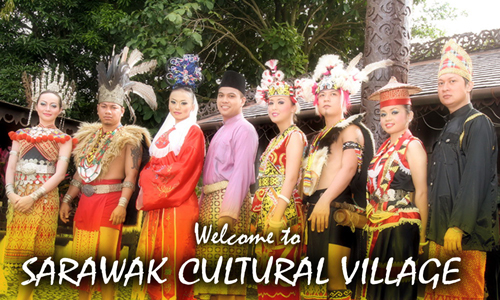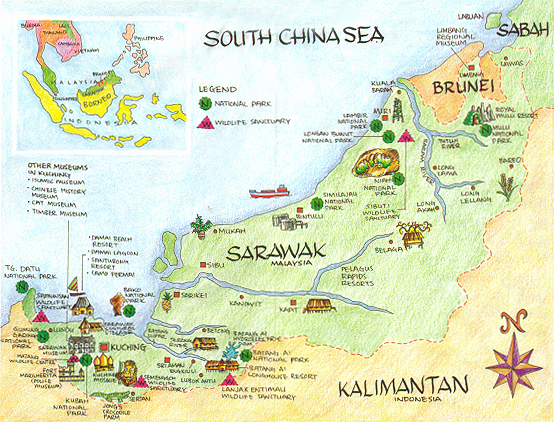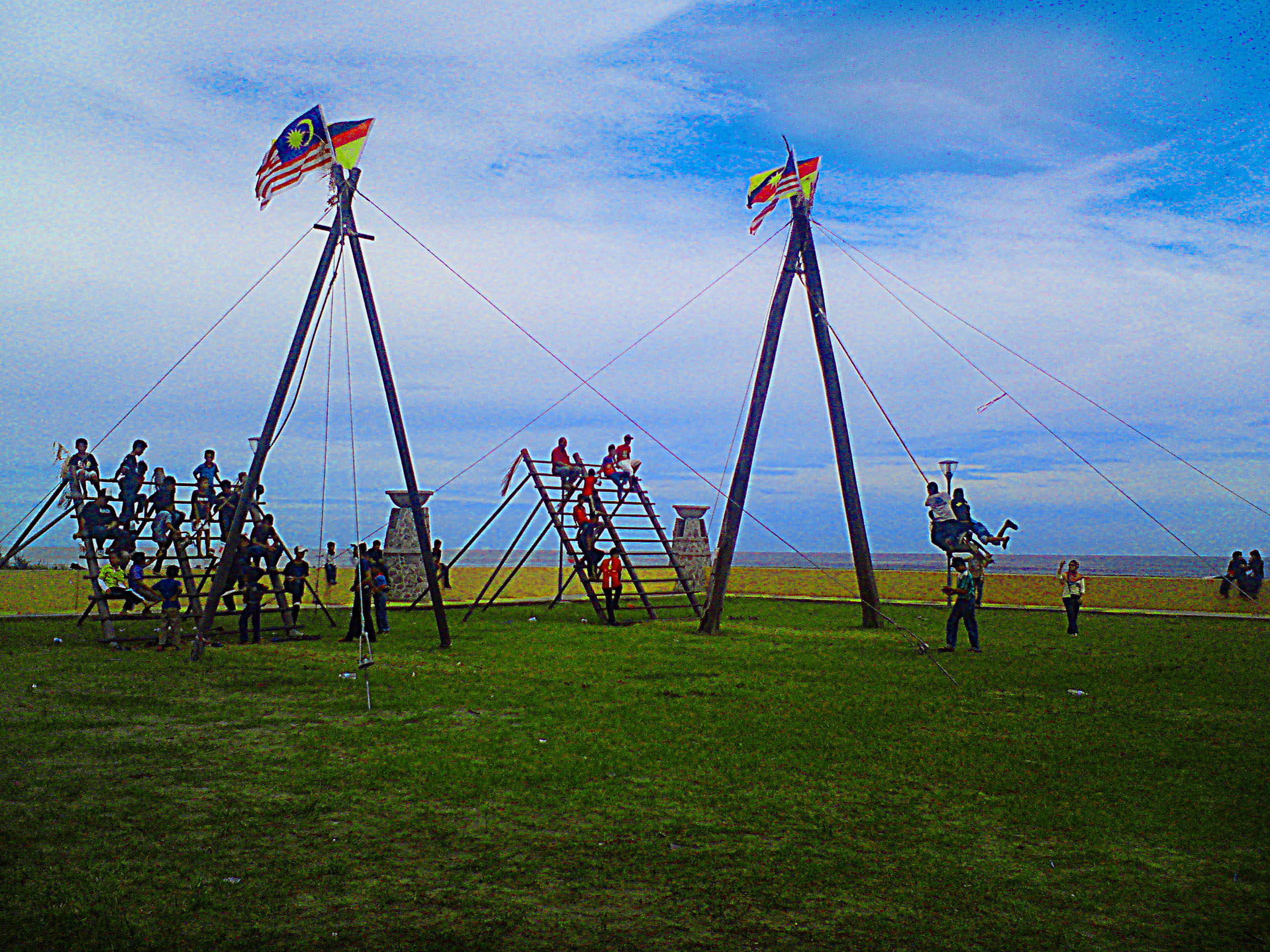IBAN
The Ibans form the largest percentage of Sarawak's population, making up some 30%. Once known as the legendary headhunters of Borneo, the Ibans of today are a hospitable and placid people. The Ibans are originally from Kalimantan, and so their culture and traditions as observed in Sarawak are very similar to the Dayaks in Kalimantan.
 Because
of their history as pirates and fishermen, they were conventionally
referred to as the "Sea Dayaks". The Ibans dwell in longhouses, a stilted
structure comprising many rooms housing a whole community of families.
Because
of their history as pirates and fishermen, they were conventionally
referred to as the "Sea Dayaks". The Ibans dwell in longhouses, a stilted
structure comprising many rooms housing a whole community of families.The Ibans are renowned for their Pua Kumbu (traditional Iban weavings), silver craftings, wooden carvings and beadwork. Iban tattoos which were originally symbols of bravery for the Iban warriors have become amongst the most distinctive in the world. The Ibans are also famous for their tuak, a sweet intoxicating rice wine which is served during big celebrations and festive occasions.
The majority of Ibans practice Christianity. However, like most other ethnic groups in Sarawak, they still hold strong to their many traditional rituals and beliefs.

The Iban traditional dance, the ngajat, is performed accompanied by the taboh and gendang, the Ibans' traditional music.

Pua Kumbu, the Iban traditional cloth, is used to decorate houses.








 In
1838 James Brooke, a British adventure with an inheritance and an armed
sloop arrived to find the Brunei Sultanate fending off rebellion from war
like inland tribes. Sarawak was in chaos, Brooke put down the rebellion
and as a reward signed a treaty in 1841 was bestowed the title Governor
and granted power over parts of Sarawak. He pacified the natives,
suppressed headhunting, eliminated the much-feared Borneo pirates,
bringing ever growing tracts of Borneo under their control. Brooke was
appointed Rajah by the Sultan of Brunei on August 18, 1842 and founded the
White Rajah Dynasty of Sarawak. The Brooke dynasty ruled Sarawak for a
hundred years and became famous as the "White Rajahs", accorded a status
within the British Empire similar to that of the rulers of Indian princely
states. Indeed, in 1850 the USA recognised Sarawak as an independent state
— as did even the British, in 1864!
In
1838 James Brooke, a British adventure with an inheritance and an armed
sloop arrived to find the Brunei Sultanate fending off rebellion from war
like inland tribes. Sarawak was in chaos, Brooke put down the rebellion
and as a reward signed a treaty in 1841 was bestowed the title Governor
and granted power over parts of Sarawak. He pacified the natives,
suppressed headhunting, eliminated the much-feared Borneo pirates,
bringing ever growing tracts of Borneo under their control. Brooke was
appointed Rajah by the Sultan of Brunei on August 18, 1842 and founded the
White Rajah Dynasty of Sarawak. The Brooke dynasty ruled Sarawak for a
hundred years and became famous as the "White Rajahs", accorded a status
within the British Empire similar to that of the rulers of Indian princely
states. Indeed, in 1850 the USA recognised Sarawak as an independent state
— as did even the British, in 1864!






 An
annual event organized by Kuching Resident Office. The event is the
showcase of boat race with participation from various government
agencies, private sectors and also participants from overseas such as
Indonesia and Brunei. Other activities include displays of crafts and
exhibitions by local entrepreneurs.
An
annual event organized by Kuching Resident Office. The event is the
showcase of boat race with participation from various government
agencies, private sectors and also participants from overseas such as
Indonesia and Brunei. Other activities include displays of crafts and
exhibitions by local entrepreneurs.


